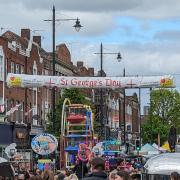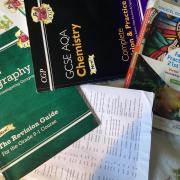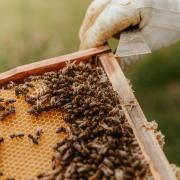
Beautiful, glittering golds and reds. Swirling full skirts creating spirals on the dance floor. Synchronised, elegant movements. The Garba dance festival held at Woodford County High School this month was a definite success, but what is a Garba celebration and where did it come from?
Garba is a type of dance that originated from India, more specifically the idyllic state of Gujarat. As well being renowned for being the home of Mahatma Gandhi, the Gujarat state is famous for the birth of the folk dance Garba, which is traditionally used as a way to honour the goddess Parvati during the Hindu festival of Navaratri. Certainly this dance has been replicated in many Bollywood blockbusters with famous stars, such as India’s national treasure Deepika Padukone.
Strong, fierce and maternal, this warrior goddess is celebrated annually for fighting the forces of evil and unleashing her powers on wrongdoers, in what is the oldest religion on Earth, Hinduism. Although Garba is specific to the state of Gujarat, Parvati is celebrated all over the Indian subcontinent during Navaratri. Essentially Navaratri concerns the epic battle of good over evil- with some Hindus believing it is about victory of god Rama over the demon king Ravana. Vanesha Mehta and Nikita Shah, the organisers of the Garba festival at Woodford, said they believe event is about celebrating life and their Gujarati heritage.
All over India during the 10 days of Navaratri, Hindus flood their cities and homes with candles and bright colours. Some indulge themselves with great feasts, others fast in order to show their reverence, yet dancing and large scale, communal worship is common across the subcontinent. For example, Vanesha Mehta told me how it “allows all types of people to come together to do this unified dance.”
One of the more popular reasons across India for celebrating Navaratri, is the Hindu belief that the goddess of fertility and love, Parvati, had spent 9 days fighting Mahishasura, which literally translates to buffalo demon. He had to be killed as this demon had waged war on the gods, terrorised the natives and embodied evil, ignorance and deception. The demon was certainly tricky to destroy due to him having the gift of immortality. Feeling dejected after being defeated by the demon, the gods created Parvati, who successfully destroyed Mahishasura . This powerful figure killing the evil demon illustrates the classic paradigm of the fight between good and evil- a theme found in many other religions. Vanesha told me how she loves this celebration because it “shows the power of females.”
As well having religious significance, Garba festivals also hold cultural importance. For instance, Nikita Shah states that “Garba is a free style dances which people do in concentric circles. The dances feature in all types of events including Jain and Hindu communities’ events as well as weddings and parties.” She also told me how the Garba festival was not only about celebrating cultural diversity and generally having a great deal of fun, but also about giving. This is as Vanesha and Nikita donated all the ticket and raffle sales to the charity Camfed- they managed to raise over £1000 for girls education! When asked why they chose this charity, Nikita said that “being students at a girls high school and strongly supporting the empowerment of women all over the world,” was the reason. Nikita also stated that “Camfed appealed to us due to its work with young girls in less developed countries to give them an education and to help them to avoid child marriage.” Vanesha similarly told me “it seemed like our responsibility to help less fortunate girls in developing countries to get the same opportunities that we get so that they can have a bright future.” Clearly these very noble and admirable intentions translated into very success activism.



























